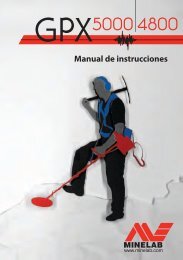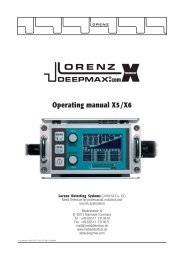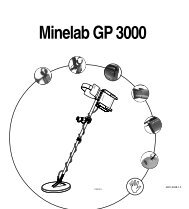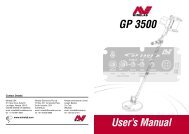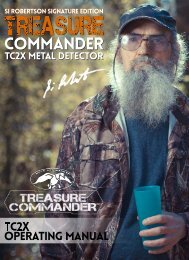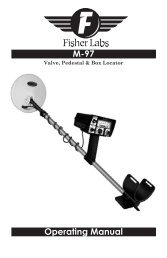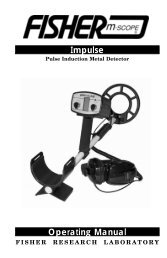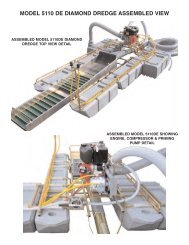4" Dredge Instructions - Keene Engineering
4" Dredge Instructions - Keene Engineering
4" Dredge Instructions - Keene Engineering
- No tags were found...
Create successful ePaper yourself
Turn your PDF publications into a flip-book with our unique Google optimized e-Paper software.
Air Reserve Tank Model RT-1greater amount of air, the largevolume of air in the reserve tankwill supply the reserve airrequired. If you were breathingTypical air system for one diver, including air hose, reserve tank,regulator, harness, and connector hose to compressordirectly from compressor itself,your rate of inhalation mightan even flow of air.food grade vinyl wrapped with aactually surpass the air volumeAnd finally, the most importantfunction of all. The reserve covered with a heavy duty PVCnylon webbing reinforcement andprovided by the compressor, andyou would not get a sufficienttank will contain enough pressurizedair to give the diver a couplehose is designed to prevent kink-abrasion resistant wall. Hookahamount of air.The reserve tank functions asof minutes breathing time, should ing and collapsing that could preventthe flow of air being shut offa cooling and condensation vessel.his compressor, or engine failureFew divers realize it, but the airrun out of fuel. Equipment breakdownis not a pleasant thing to colored a bright yellow or orange,A quality Hookah hose will beemerging from a Hookah compressoris quite hot, and can actuallyreach temperatures as highconsider while working underwater,but is always a possibility. will also float, so that any excessfor a high degree of visibility. Itas 190 degrees.In the event of an engine failure hose not actually being used willAs the air enters the thewithout a reserve tank in the system,a diver could experience an away from the diver, reducingfloat on the surface, completelyreserve tank, it will expand andthecool. This expansion process willimmediate loss of air that could possibility of entanglements onalso condense most of the watercontained in the compressed air.lead to desperation and panic. Anyexperienced diver will tell you,the bottom. For example, if youare diving in ten feet of water butHookah compressors, because ofthat panic is the leading cause are of using a thirty foot length oftheir small size, do not have thedrowning incidents.capability to remove the moisturefrom the air and hence, theydeliver air with an appreciablemoisture content. The expansionHookah air system is the air hose. impart any "flavoring" to the air,process in the reserve tank allowsHookah air hose is made of a spe-ancial vinyl plastic construction, is OSHA” requirements.should meet “ FDA andthe water to condense, ensuringthat the diver breaths less mois-resistant to the effects of oil,gasoline and sunlight that existsin the environment.ture in the air.The reserve tank also suppressessurges from the compressoror any temporarydecrease in running speed. Often aTHE AIR HOSEThe next component in theConventional rubber hoseshould never be used for diving,because it will gradually deteriorateand become toxic. Hookahthe compressor's engine will rununeven due to moisture in thehose commonly has an insidegasoline. The reserve tank candiameter of 3/8ths. of an inch. Itcompensate for this by deliveringis constructed of an inner liner of3air hose, the excess twenty feetwill float on the surface, completelyaway from you.A quality Hookah air will notTHE REGULATORThe regulator is an oral respirationdevice that is worn in thedivers mouth. The regulator regulatesthe amount of air that isreceived by the diver each timehe inhales. Because the diversnose is covered by his face mask,air must be inhaled through the



